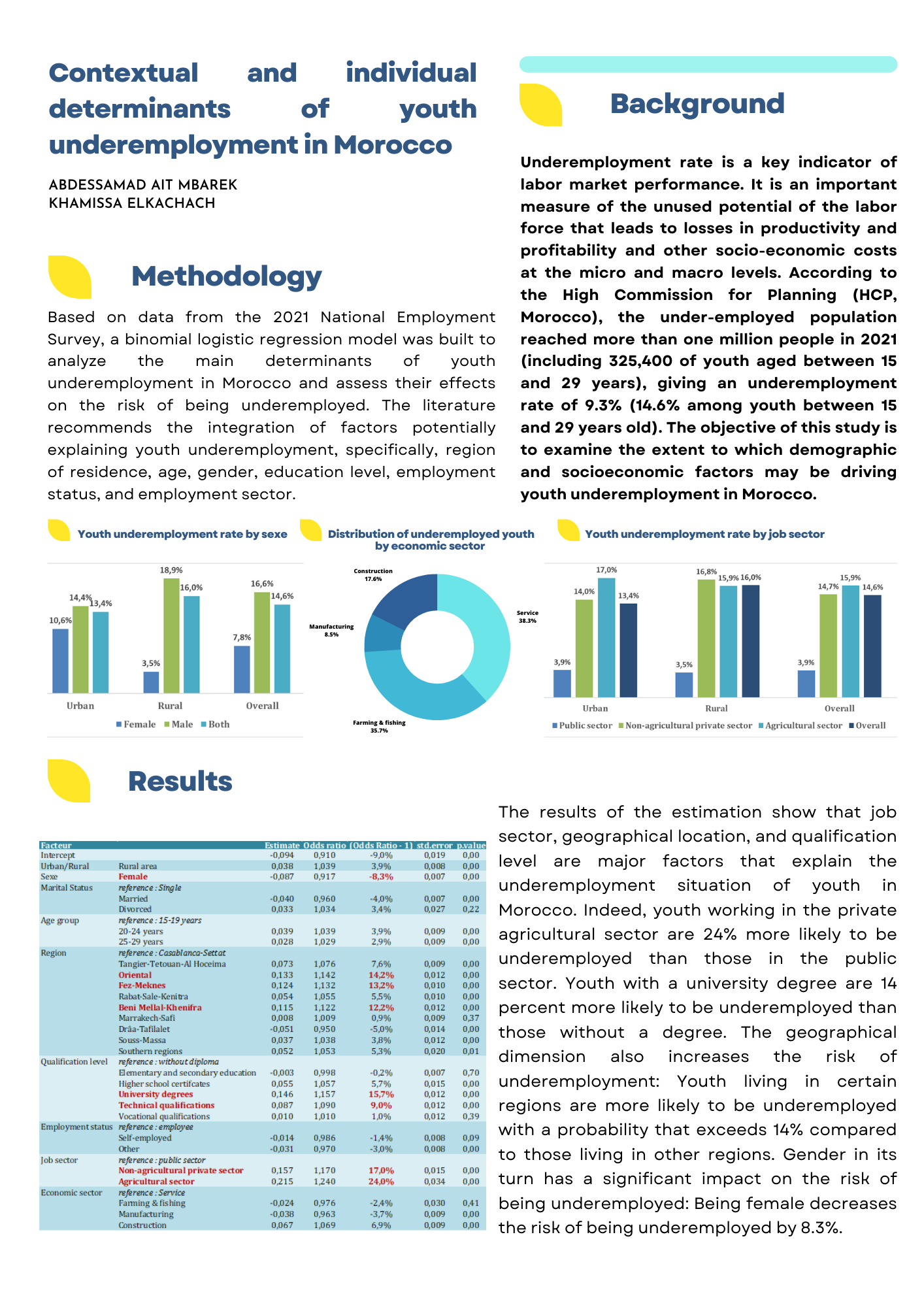Contextual and individual determinants of youth underemployment in Morocco
Conference
64th ISI World Statistics Congress - Ottawa, Canada
Format: CPS Poster
Keywords: labour market, logistic-regression, underemployment, youth

Abstract
Employment is a form of social integration and has a major role in wealth creation and income allocation. Therefore, several actions have been undertaken to promote the national labor market and create more jobs. Nevertheless, the Moroccan economy keeps on struggling with low employment growth. The challenges are more varied and complex in nature and have become more pronounced. They cover quantitative issues, such as the high level of youth unemployment and the low female labor force participation rate, and other qualitative issues related to the adequacy of training/employment, low labor productivity, and underemployment. The latter is a key indicator of labor market performance. It is an important measure of the unused potential of the labor force that leads to losses in productivity and profitability and other socio-economic costs at the micro and macro levels.
According to the High Commission for Planning (HCP, Morocco), the under-employed population reached more than one million people in 2021 (including 325,400 of youth aged between 15 and 29 years), giving an underemployment rate of 9.3% (14.6% among youth between 15 and 29 years old). The level of underemployment endures high in Morocco and requires in-depth analysis to fully understand the underlying causes behind this phenomenon. The objective of this study is to examine the extent to which demographic and socioeconomic factors may be driving youth underemployment in Morocco.
Based on data from the 2021 National Employment Survey, a binomial logistic regression model was built to analyze the main determinants of youth underemployment in Morocco and assess their effects on the risk of being underemployed. The literature recommends the integration of factors potentially explaining youth underemployment, specifically, region of residence, age, gender, education level, employment status, and employment sector.
The results of the estimation show that employment sector, geographical location, and qualification level are major factors that explain the underemployment situation of youth in Morocco. Indeed, youth working in the private agricultural sector are 24% more likely to be underemployed than those in the public sector. Youth with a university degree are 14 percent more likely to be underemployed than those without a degree. The geographical dimension also increases the risk of underemployment: Youth living in certain regions are more likely to be underemployed with a probability that exceeds 14% compared to those living in other regions. Gender in its turn has a significant impact on the risk of being underemployed: Being female decreases the risk of being underemployed by 8.3%.
